12Pcs Front Steering Tie Rod End Sway Bar End Link For 1996-2002 Toyota Corolla
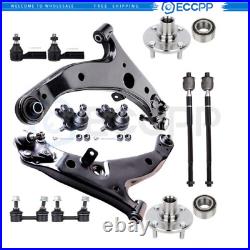
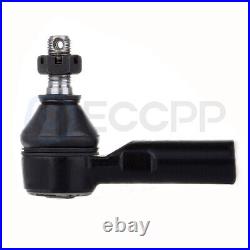
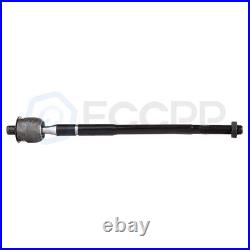
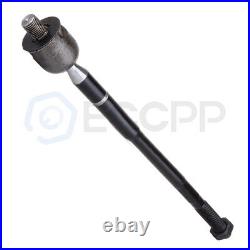
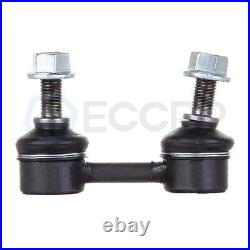
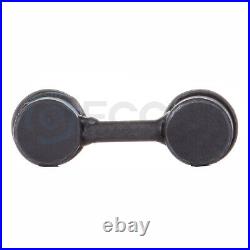
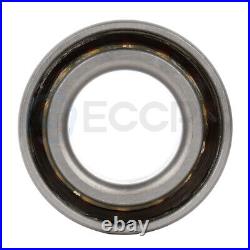
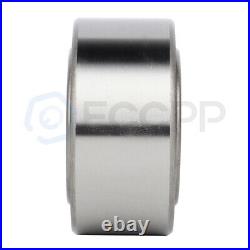
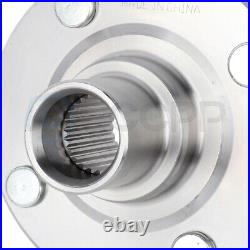
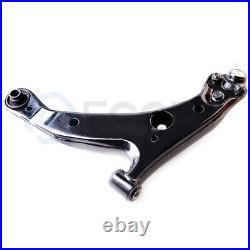
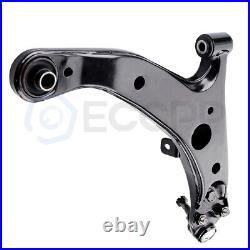

Although some parts have grease fittings, other parts are factory sealed, but do not affect the fit and quality of the parts. Please contact our customer services for targeted discount after all the items are received if you have reached any targeted discount thresholds, the terms of which is at the bottom of this page. In the event this item should fail due to manufacturing defects during intended use, we will replace the part free of charge. If you feel a bump in the steering when driving over road bumps or curbs, this might be due to worn tie rod ends or inner tie rods. Clicking noises during sudden steering movements can also be symptoms of a defective tie rod. In order to determine the exact cause and replace the defective tie rod, the car must be elevated with a vehicle lift in order to be examined more closely.
Picture(A) Note: Cleanliness is extremely important when working on the power steering. Incorrect work and contamination can lead to leakage and, in the worst case, to failure of the steering assistance.
Lift the vehicle and dismount the front axle wheels. Spray the fastening nut of the tie rod end with rust remover and leave it on for a few minutes.
Dismount the front underride guard. Loosen the fastening nut from the tie rod and remove it completely. Remove the tie rod end from the steering knuckle using an appropriate ball joint separator. Remove the clamp of the bellow on the steering gear. Push the bellow towards the tie rod end.Unscrew the inner tie rod from the rack. Clean the sealing face of the bellow at the steering gear.
Clean the lug of the rubber contact surface of the ball joint in the steering knuckle. Note:Always use new self-locking nuts and bolts for a reliable repair. Mount the bellow and close the clamps with the appropriate special tool.
Note:Incorrect mounting of the bellow can lead to corrosion of the rack: the steering gear starts leaking which can lead to a failure in the steering assistance. Secure the ball joint in the steering knuckle and mount the nut.
Note:During mounting, the ball stud should not turn within the ball joint. This can cause damage inside the ball joint and can lead to early failure. Tip:Secure the ball stud against twisting with a suitable tool. Mount the front underride guard. Align the wheels and adjust them if necessary.What are the symptoms of a bad sway bar? Some of the common symptoms of a bad sway bar bushing or sway bar links going bad are: clunking noise, rattling noise, knocking uneven noise road, lack of stability when driving and noise going over speed bumps. What happens when a sway bar breaks? Because a sway bar helps the car's suspension to put more pressure on loaded springs, a broken sway bar means that the car's suspension will not be able to handle corners as well or as quickly.
While it is possible to drive with a broken sway bar, as a precaution do not take corners with excessive speeds. Suspension Control Arm Replacement Guideline. Control arms are installed in pairs on the front and rear axle and connect the chassis to the wheels as part of the suspension. Therefore, they have a significant influence on the driving characteristics of the vehicle.
A dynamic or a comfortable driving style? The control arms are individually adjusted to the vehicle depending on the desired characteristics. They also absorb lateral movements and forces resulting from driving off and braking. A defective control arm can manifest in the following ways.
Increasingly woolly and imprecise steering. Tip:If the control arm is in working order, it is possible to only replace the defective bearings and joints. However, replacing bearings, control arm bushings and ball joints can be very complex and costly. First lift the vehicle using a car lift, ideally a wheel-free four-post car lift. This makes it easier to correctly tighten the control arm fixing screws.
WARNING:Depending on the axle design, the control arm may need to be secured against falling with a suitable device, e. Treat the fixing screws and nuts of the control arm with rust solvent and leave it to work for a few minutes so that they are easier to loosen. On vehicles with automatic headlight levelling, it may be necessary to detach the leveling sensor from the control arm. If the stabilizer is connected to the control arm, the next step is to loosen and remove the corresponding stabiliser fixing screws. Loosen and remove the control arm fixing screws.Loosen the ball joint at the steering knuckle with a suitable special tool e. Remove the old control arm. Clean the mounting flange of the ball joint pin on the steering knuckle with sandpaper and then with brake cleaner.
Otherwise single rust particles can enter the new control arm joint via the ball pin, potentially leading to premature failure of the joint. Fit the new control arm with the supplied accessories and attach new fixing screws and nuts. Reattach the stabilizer and, if applicable, the leveling sensor for headlight leveling to the control arm. NOTE:Do not tighten the fixing screws and nuts in this step, otherwise the rubber mounts will twist when the suspension compresses.
This would lead to undesired preloading onf the mounts. Now lower the vehicle until the suspension is compressed. Depending on vehicle type, load or unload the vehicle until the required height published in the specific installation instruction is reached.This is where a wheel-free four-post car lift is advantageous, as the underside of the vehicle can still be easily accessed once lowered. Lower the vehicle all the way. Measure the chassis and adjust if necessary. Sway Bar Stabilizer Link Replacement Guideline. While driving, the following signs may indicate a faulty sway bar stabilizer link: (1).
Rattling and thumping noises on rough roads. Stronger inclination of the vehicle during cornering. If the sway bar stabilizer link is found to be defective, it should be replaced as described below.
Raise vehicle and remove front wheels. Tip:Always check both stabilizer links and replace them in pairs if necessary. Spray fastening nuts of the stabilizer link with rust remover and let act for a few minutes.
Loosen the lower fastening nut of the stabilizer link at the stabilizer and remove. Tip:If the ball stud also starts to turn, hold it with a suitable tool.
Press stabilizer link out of torsion bar. Loosen the upper fastening nut of the stabilizer link at the suspension strut and remove it. Press stabilizer link at suspension strut out of bracket. Insert new stabilizer link at suspension strut. Insert new stabilizer link at stabilizer. Tip:Even if replacing the stabilizer link does not directly affect the chassis setting, we recommend checking the axle setting and adjusting if necessary after working on the suspension. Conclude with a test drive. Why should I get my tie rods inspected on a regular basis? If you don't get your tie rods inspected on a regular basis, there are some warning signs to watch (and listen) for. If your vehicle pulls to one side while driving, or when braking, it's possible that bad tie rods may be the culprit. Your vehicle's tires will also show uneven wear on the inside and outside edge of the tire when there's a tire rod issue. However, one of the most noticeable signs of tie rods going bad will be a knocking sound coming from the front end of the vehicle when you turn into a parking space, or some other low speed, tight turning situation. Vibrations One of the first symptoms that your tie rods are damaged or breaking is that the steering wheel will vibrate slightly. This is especially prevalent when you are speeding up or turning. This happens because the steering wheel is losing its control over the tires, causing the steering wheel to shimmy as you drive. Shaking As the tie rods become further damaged, you will start to notice that the car itself will start to shake. This happens because the tires may start to wobble without you having full control over them.Although you should take your car into a mechanic at the first sign of tie rod problems, if you experience your car shaking you could be at risk for serious tie rod damage-which can cause accidents. Take your car into a mechanic if you experience this tie rod symptom. If there is a knocking or clunking noise in the area of the front axle when the car is traveling over road bumps, potholes or curbs, then there is usually a defect in a component of the wheel suspension. The side of the front axle from which the (vibration) noise is emanating can already be determined during a test drive.
The type of noise also already provides certain indications for maintenance regarding which components might be faulty. Raise the vehicle and remove the front wheels. To loosen the fastening screws and fixing nuts of the compression ball joint more easily, spray them with rust remover and allow to act for a few minutes.
Loosen the fastening screws of the broken ball joint on the control arm and remove the nuts. Loosen and remove the fixing nut of the ball joint on the steering knuckle. Tip:If the ball stud rotates, hold the ball stud in place with a hexagon socket. Remove the bad or worn ball joint from the control arm. Loosen the compression ball joint on the steering knuckle using a suitable special tool.
Control Arm & Ball Joint Assembly. 518507, ES2382, EV303, K90124, K80335. K80336, K9756, replacing control arm car, rods ends.
If you have reached any targeted discount threshold(s), please contact our customer services after you received all your items. ECCPPAUTOPARTS has the final power of interpretation of all the above Targeted Discount Terms and Procedures.
Virgin Islands, Northern Marianas, Guam are not deliverable. ECCPPAUTOPARTS promises free replacement due to quality defects or item not as described issues within 90 calendar days from the date when buyers receive their items in the situation when buyers are willing to provide convictive proofs or professional diagnose report if required, otherwise ECCPPAUTOPARTS has the right to refuse any replacement requests. 12V Universal Low Pressure 5-9 PSI Electric Fuel Pump Installation Kit E8012S.Pair Front Or Rear Wheel Hub Bearing For Chevy Impala Pontiac Grand Prix Venture. Front Or Rear Wheel Bearing Hub For Buick Rendezvous Lesabre Chevrolet Impala. ECCPP Black Quick-Disconnect Threaded Cap Fittings 6AN Male to 3/8 Straight.
ECCPP T-6061 Aluminum Push Lock Fuel Hose End Weight 0.026kg Electroplated. Engine Oil Cooler Rear 280°C-310°C For Volkswagen Eos 2.0L Performance/Custom. This item is in the category "eBay Motors\Parts & Accessories\Car & Truck Parts & Accessories\Steering & Suspension\Control Arms, Ball Joints & Assemblies".The seller is "eccppautoparts" and is located in this country: US. This item can be shipped to United States, Canada, United Kingdom, Denmark, Romania, Slovakia, Bulgaria, Czech Republic, Finland, Hungary, Latvia, Lithuania, Malta, Estonia, Australia, Greece, Portugal, Cyprus, Slovenia, Japan, China, Sweden, South Korea, Indonesia, Taiwan, South Africa, Thailand, Belgium, France, Hong Kong, Ireland, Netherlands, Poland, Spain, Italy, Germany, Austria, Bahamas, Israel, Mexico, New Zealand, Philippines, Singapore, Switzerland, Norway, Saudi Arabia, United Arab Emirates, Qatar, Kuwait, Bahrain, Republic of Croatia, Malaysia, Brazil, Chile, Colombia, Costa Rica, Panama, Trinidad and Tobago, Guatemala, Honduras, Jamaica, Antigua and Barbuda, Aruba, Belize, Dominica, Grenada, Saint Kitts-Nevis, Saint Lucia, Montserrat, Turks and Caicos Islands, Barbados, Bangladesh, Bermuda, Brunei Darussalam, Bolivia, Ecuador, Egypt, French Guiana, Guernsey, Gibraltar, Guadeloupe, Iceland, Jersey, Jordan, Cambodia, Cayman Islands, Liechtenstein, Sri Lanka, Luxembourg, Monaco, Macau, Martinique, Maldives, Nicaragua, Oman, Peru, Pakistan, Paraguay, Reunion, Vietnam.
- Brand: ECCPP
- Manufacturer Part Number: EC84127601
- Placement on Vehicle: Front, Outer, Inner, Lower, Right, Left
- Universal Fitment: No
- Manufacturer Warranty: 1 Year
- Features: Greasable
- Items Included: Mounting Hardware
- Performance Part: No
- Type: Control Arm & Ball Joint Assembly
- Interchange Part Number: 518507,ES2382,EV303,K90124,K80335
- OE/OEM Part Number: K80336,K9756,replacing control arm car,rods ends
- Superseded Part Number: wheel hub bearing assembly
- Cotter Pin Hole: Yes
- Material: Alloy Steel
- Mounting Style: Bolt-On
- Finish: Coated
- ABS Sensor: NO ABS sensor
- Bolt Circle Diameter: 3.9 In
